ENERGY-SAVING TIPS
How to use less energy and
save during the winter months
When the weather turns chilly, you might ask yourself, "How can I lower my electricity bill in winter?"
The best energy-saving tips for winter involve using less electricity while making sure your home is a fortress that keeps the warmth inside. Many modifications can be made around your house or apartment to increase its energy efficiency. By minimizing heat loss and usage in various areas, you won't be wasting electricity, or money. And don't forget, small changes in behavior by you and your family can also yield more energy savings.
Follow these winter energy-saving tips to use less electricity during the colder months and help lower your energy bill:
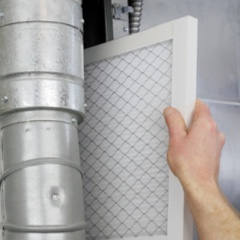
- Maintain your heating system. Maintenance is essential for your heater to work properly. Make sure filters are clean and replace them periodically during the season.
- Close unused air vents. Heating rooms you don't use is a surefire way to increase your electricity bill. Close off vents in rooms that only get occasional use.
- Let vents breathe. The heat blowing out of your registers needs a clear, unobstructed path into the room to properly heat it. Rearrange the furniture in each room so it doesn't block the registers and prevent airflow.
- Seal ductwork. To keep ductwork from leaking heated air, seal it at joints and intersections with foil-backed tape or silicon caulking.
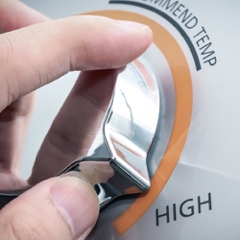
- Insulate everything. Insulate the first three feet of cold and hot water pipes near your water heater. You can also wrap your water heater in an insulation blanket when it's not being used.
- Lower your water heater temperature. Water heaters are often set to 140 degrees, but setting them between 120 and 125 degrees is sufficient to provide hot water for your home, reducing your energy costs. It also prevents scalding.
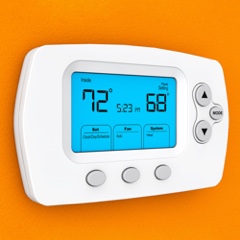
- Install a programmable thermostat. This is essential to saving energy: When you're at work, school, or otherwise away from home, set the thermostat lower than usual for the time frame when the house is empty.
- Try a smart thermostat. For even more energy savings than a regular programmable thermostat, you can invest in a smart thermostat. In addition to being programmable, it also learns your preferences over time and adjusts automatically. Plus, you can control it from your smartphone to have it kick the heat on before you arrive home or turn it off if you're going to be out longer than expected. By making adjustments on the go, you can save money by not heating an empty house.
- Set your thermostat four degrees lower. The secret to not feeling the four-degree difference? Use your ceiling fans! Simply switch them to spin in a clockwise direction to help recirculate warm air that has risen to the ceiling.
- Lower the thermostat at night. The U.S. Department of Energy recommends lowering your thermostat by 10 to 15 degrees at night to save about 10% on your heating bill1.
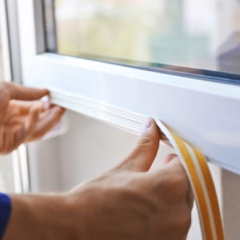
- Seal all leaks properly. Poorly installed or insulated windows and doors, as well as light fixtures, pipes and wires, can be sources where energy leaks into and out of your home. If daylight can be seen around a door or window, it requires sealing. Use caulking or weather stripping to keep the cold air out and the warm air in. Cracked or loose weather stripping should be replaced for the best seal.
- Insulate windows with plastic. If you are not able, or not allowed, to do repair work (for example, in apartments or rental homes), you can prevent heat loss from windows by taping clear plastic film to the inside of your window frames during the cold winter months. Make sure the plastic is sealed tightly to the frame. The effect is similar to adding a second pane of glass to the window.
- Install energy-saving window coverings. If you're in the market for new curtains or shades, look into insulated curtains and other thermal window treatments to help prevent heat loss.
- Enjoy the sunshine. We often forget that the sun is still a natural source of energy in winter. Open up your shades and curtains on your south-facing windows during the day to naturally heat your home for free. (But close them at night to reduce any chill from cold windows.)
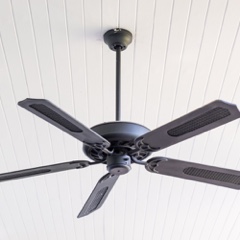
- Set your ceiling fan to spin clockwise. When spinning clockwise, your ceiling fan's blades push the hot air back down after it has naturally risen, distributing warm air in an energy-efficient manner.
- Only use exhaust fans when necessary. Your kitchen and bathroom exhaust fans pull in hot air that has risen and send it outside. Use them sparingly!

- Seal it. If you don't use your fireplace, you can seal the flue area to keep cold air from getting in.
- Turn off the pilot light. For natural gas fireplaces, make sure to turn off the pilot light when you're not using the fireplace.
- Close the damper. Unless a fire is burning, close the damper. Leaving it open is like leaving a window open, letting cold air in and allowing warm air to escape up the chimney.
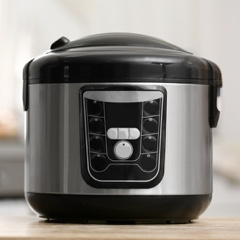
- Cook meals in large batches. By cooking in bulk, you can save energy by reheating servings in the microwave instead of using the oven each time.
- Use a pressure cooker. Modern electric pressure cookers utilize a fully insulated external pot and require much less water for cooking, making them an energy-efficient choice in the kitchen. They reduce cooking time by up to 70% compared with boiling, steaming, oven cooking or slow-cooking.
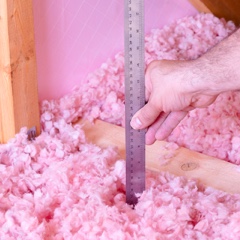
- Check your attic insulation. Most attics should have about 10 to 14 inches of insulation (a value of R-38).
- Insulate the access door. Even if your attic is well-insulated, the access door may not be. To prevent rising warm air from leaking into the attic, use adhesive to attach fiberglass batt insulation to the attic side of the door, forming a good seal.
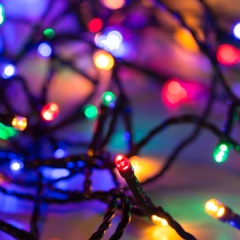
- Use LED holiday lights. According to the U.S. Department of Energy, light-emitting diode (LED) lights use at least 75% less energy and last 25 times longer than incandescent lights, making them an energy-efficient choice for holiday lighting2. Plus, strands of LED lights are also safer and sturdier than their traditional counterparts.
- Plug light strands into a power strip. This makes them easier to turn off and unplug during the day, meaning less wasted power. Note: You can apply this tip to many other energy-intensive devices around your home, too.
- Put decorative lights on a timer. Nobody will see your lights at 2 a.m., so why keep them on all night? Leave them on for six hours or less each day to spread holiday cheer without running up your bill.
- Use battery-powered decorations. Battery-powered candles provide just the right amount of soft light and look elegant, and the batteries last a long time. And if you invest in rechargeable batteries, you'll save even more over time.

- Bundle up to save a bundle. Instead of automatically turning the heat up when you're chilly, bundle up in some extra layers like a cozy blanket, warm mittens and/or a comfy sweater.
- Turn off the pilot light. For natural gas fireplaces, make sure to turn off the pilot light when you're not using the fireplace.
- Close the damper. Why let blankets go to waste in the closet when they could be providing you with additional warmth at night? Use another blanket or two at night so you can comfortably turn down the thermostat a few degrees.
By implementing some of these tips for saving energy in winter, as well as year-round energy-saving tips, you can make your home more energy efficient and help reduce your electricity bill.
1 Source: http://energy.gov/energysaver/fall-end-winter-energy-saving-tips
2 Source: http://energy.gov/energysaver/save-electricity-and-fuel/lighting-choicess-save-you-money/led-lighting
Account tools and programs to help you save:
Find out how you can use less energy. Learn more ›
Keep your energy bills under control with Average Billing. Your monthly bill will be based on a rolling 12-month average usage, giving you more predictability and avoiding seasonal spikes. Get started ›
From paying your bill to signing up for services, it’s now easier to manage your account anytime, anywhere, straight from your phone. Download the app ›
Electric heat is heat produced by an appliance (e.g., an HVAC unit) using electricity instead of some other fuel like natural gas.
Ask yourself the following questions:
-
Does your home use a fuel source other than electricity, such as gas? Do you pay your electricity bill plus another fuel bill?
-
Does your clothes dryer have a conventional plug and wall outlet, or is the plug bigger than normal? Gas dryers typically have normal-looking plugs, and electric dryers usually have bigger plugs to accommodate larger voltage.
If you still aren't sure whether your furnace is gas or electric, ask an HVAC technician.
-
We have several holiday cooking, decorating and general energy tips that can help you save electricity and money.
-
Portable space heaters can help you save money in some instances. If your central heating system is electricity and your space heater is in good working condition with an accurate thermostat, the space heater could be the cheaper option, provided you turn your central heater down and only use one or two space heaters in very isolated areas for short periods of time.1
-
However, if your central heating system runs on gas, an electric space heater will not reduce your electricity bill. It could potentially reduce your total energy costs (gas and electricity) if you use the space heater in only a small area and are sure to turn it off when you are not in the room, but you would have to compare your gas bill against the cost to run the space heater on electricity.
-
If you decide to use a space heater, be sure to buy one that is the appropriate size for the space you want to heat. Invest in a model that includes a timer to avoid leaving it on too long, as space heaters are a fire hazard and can consume more energy than anticipated when left unattended.2
-
The National Fire Protection Association recommends that chimneys be inspected once per year.3 The Chimney Safety Institute of America adds that you should sweep your chimney once it contains 1/8" of soot—sooner if your fireplace is glazed—to prevent chimney fires.4 Whether you use your chimney or not, debris may be present due to storms, vegetation, animals, birds and general deterioration, so annual maintenance is necessary.
-
If you have a wood-burning fireplace, you can use it to heat very large spaces without the use of electricity or gas. A gas fireplace could save you on your electricity bill if your central heater is electric, but if your central heater runs on gas, it may not be of benefit.
-
No matter which kind of fireplace you have, keep your fireplace efficient and safe with regular maintenance and sweeping.
-
Yes, reducing the temperature of your water heater can help you lower your electricity bill if your water heater is electric. If your water heater is gas, you may still save money, but the savings would be seen on your gas bill, not your electricity bill.
-
Most homes only need the water heater to be set at 120°F, even though the water heater manufacturer may have the water heater set much higher by default.5
-
We recommend a heater tune-up at least once per year, in the fall before winter hits, where a licensed professional will perform a service check on your system and recommend any needed repairs.
-
If you are having trouble paying for your current bill, call 1-800-MY-CIRRO to talk about payment plans and options available to you. We can help.
-
For help with future bills, try one of these options:
-
Consider different payment options, like Average Billing. Call 1-800-MY-CIRRO to see if you're eligible. With Average Billing, your monthly bill will be based on a rolling 12-month average usage, giving you more predictability and avoiding seasonal highs.
-
Dial 211 to learn about additional assistance available in your community.
-